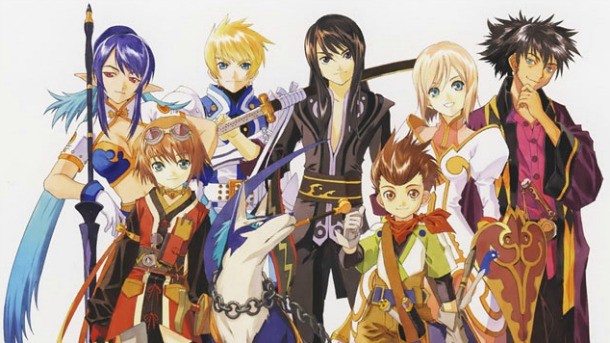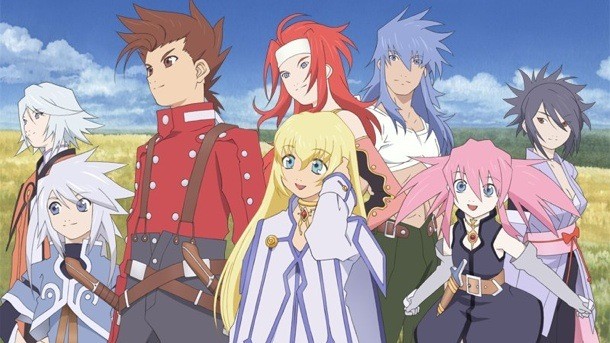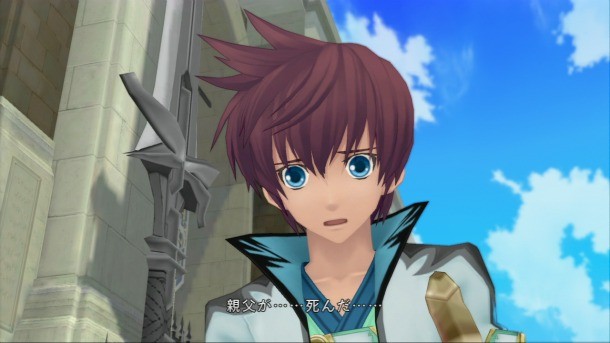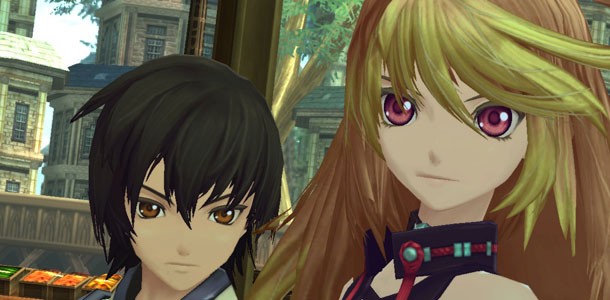RPG Spotlight: Tales

One of the questions readers ask me most is if they would like a particular series. As a way to provide the answer and celebrate beloved franchises, RPG Spotlight gives a concise overview of the elements that give a franchise its heart and soul.
In this edition, I take a look at the Tales games from Namco Bandai. Tales is an RPG empire in Japan, with frequent releases and spinoffs (like Tales of Vs.), but it’s also one of the few RPG legacies to survive in the American market.
Claim To Fame

Tales’ heralded, fast-and-fluid battle system continues to evolve in new and exciting ways, playing much like a fighting game. Chaining standard attacks and special moves called Artes provide the bulk of the combat. But what really stands out is characters’ individual growth and how they fit within in the party’s dynamic. Characters often have darker stories than you’d expect, and plenty of their growth comes from these confrontations.
Skits have also been a popular and successful element for Tales. These short, optional conversations often provide insight into story events, but also allow characters to show their lighter side with some humor. Skits best showcase how all the different party personalities mesh. Few other RPGs craft this kind of character dynamic so quickly and effectively.
As trope-filled as these games are, Tales’ writers make them feel more human with the universal issues they approach, having realistic character growth. The boss battles keep me on my toes, and the character banter often makes me grin. But my favorite aspect is characters walking away stronger after confronting their issues, like Zelos’ dysfunctional childhood in Symphonia. Often I find myself reminiscing why I fell in love with RPGs when I play Tales.
Play If You Like
If you enjoyed the character development and bonding from Persona 3 and 4, Tales is easy to recommend. If combat is your draw, fans of Ys, Star Ocean, and Kingdom Hearts should feel right at home with the action battles.
History Catch-up

Tales of Destiny for PS1 brought Tales to North America in ‘98, but Tales of Phantasia for SNES is the first entry in the franchise. However, North America wouldn’t see Phantasia until 2006, when it was released on the Gameboy Advance. Here’s where the Tales translation history starts to get complicated for Western fans. In 2001, Tales of Eternia was renamed Tales of Destiny II for North America, despite having nothing to do with the original game. It was a move to create a brand in North America. The problem? In 2002, a direct sequel to Destiny for PlayStation 2, entitled Tales of Destiny II released in Japan. North America never saw it and it’s still considered one of the most desired localizations.
Since then, Namco Bandai’s localization decisions have been questionable, especially choosing to localize a lackluster Tales of Legendia over the superior Tales of Rebirth, both PlayStation 2 titles. North American fans also missed out on several spinoffs and handheld releases, like Tales of Hearts R and Tales of Innocence R for PlayStation Vita. Many wondered if Namco Bandai would make localization a priority, and thankfully, the company recently redoubled efforts by releasing Tales of Graces f, Tales of the Abyss 3DS, and the upcoming Xillia games. In our interview, Tales producer Hideo Baba told us about his desire to gain more recognition for the series in the U.S., saying, “I have been aggressively attending overseas events and done grassroot activities for the past two years to make the series more recognizable and have more people interested in it. I believe if these activities succeed, it can be instrumental in making it possible to bring more titles overseas.”
Good Starting Points

Older Tales entries are sure to show some age, but if you ask series diehards about their favorite entries, GameCube’s Symphonia and Xbox 360’s Vesperia often take the top slots. Tales of the Abyss, available for PS2 and 3DS, isn’t a bad starting point either. Most entries don’t tie into one another, so you’re not missing out on any story elements. I recommend starting out on the easy or normal difficulty. While random battles are easy, bosses are extremely punishing if you don’t spend the time learning your special moves and defending. Button mashing isn’t the way to victory.
Criticisms

Tales has some shortcomings that may turn some off. The stories are often clichéd, and the characters are built around anime tropes (the childhood best friend of the main protagonist appears repeatedly). Chances are if you’re not a fan of Japanese animation, there’s not going to be much for you to love with Tales. Gameplay-wise, frequent backtracking makes the grind more evident, though it is lightened somewhat by the quick combat.
On The Horizon

Tales of Xillia hits shelves on August 6. A follow-up, Tales of Xillia 2, which takes place a year after the first game’s events, was recently announced for a 2014 localization in North America and Europe. That’s not the only 2014 release on the schedule though, as a PS3 HD collection, Tales of Symphonia Chronicles, includes not only Tales of Symphonia, but also its sequel, Dawn of the New World. For the first time, Namco Bandai is including dual audio for the games in the collection, so you can pick between the American or Japanese voice tracks.

Get the Game Informer Print Edition!
Explore your favorite games in premium print format, delivered to your door.
- 10 issues per year
- Only $4.80 per issue
- Full digital magazine archive access
- Since 1991









